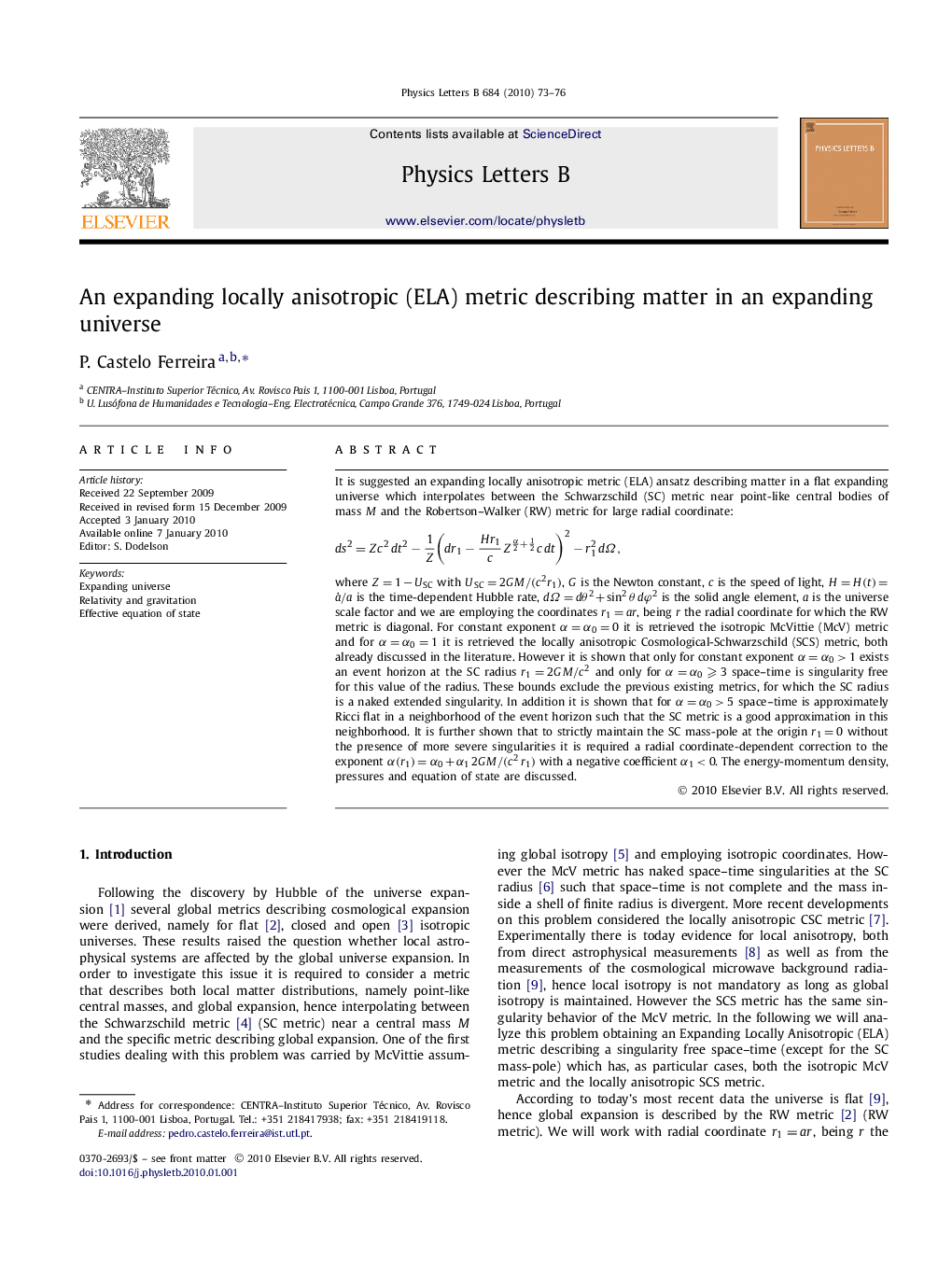| Article ID | Journal | Published Year | Pages | File Type |
|---|---|---|---|---|
| 8193762 | Physics Letters B | 2010 | 4 Pages |
Abstract
It is suggested an expanding locally anisotropic metric (ELA) ansatz describing matter in a flat expanding universe which interpolates between the Schwarzschild (SC) metric near point-like central bodies of mass M and the Robertson-Walker (RW) metric for large radial coordinate:ds2=Zc2dt2â1Z(dr1âHr1cZα2+12cdt)2âr12dΩ, where Z=1âUSC with USC=2GM/(c2r1), G is the Newton constant, c is the speed of light, H=H(t)=aË/a is the time-dependent Hubble rate, dΩ=dθ2+sin2θdÏ2 is the solid angle element, a is the universe scale factor and we are employing the coordinates r1=ar, being r the radial coordinate for which the RW metric is diagonal. For constant exponent α=α0=0 it is retrieved the isotropic McVittie (McV) metric and for α=α0=1 it is retrieved the locally anisotropic Cosmological-Schwarzschild (SCS) metric, both already discussed in the literature. However it is shown that only for constant exponent α=α0>1 exists an event horizon at the SC radius r1=2GM/c2 and only for α=α0⩾3 space-time is singularity free for this value of the radius. These bounds exclude the previous existing metrics, for which the SC radius is a naked extended singularity. In addition it is shown that for α=α0>5 space-time is approximately Ricci flat in a neighborhood of the event horizon such that the SC metric is a good approximation in this neighborhood. It is further shown that to strictly maintain the SC mass-pole at the origin r1=0 without the presence of more severe singularities it is required a radial coordinate-dependent correction to the exponent α(r1)=α0+α12GM/(c2r1) with a negative coefficient α1<0. The energy-momentum density, pressures and equation of state are discussed.
Keywords
Related Topics
Physical Sciences and Engineering
Physics and Astronomy
Nuclear and High Energy Physics
Authors
P. Castelo Ferreira,
